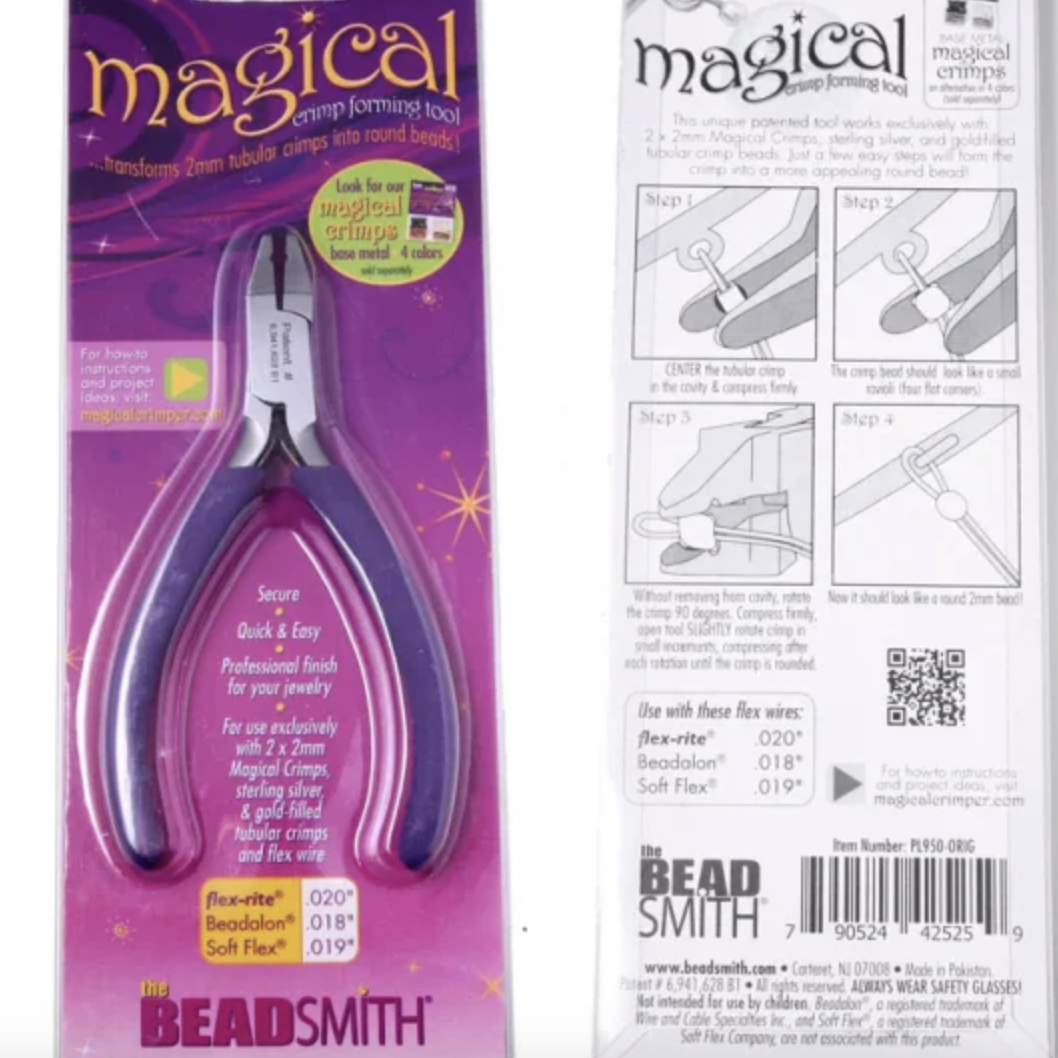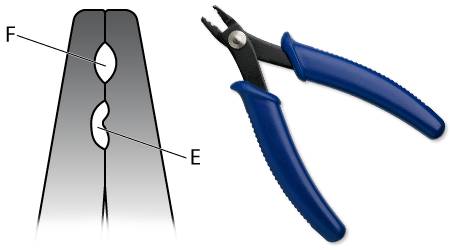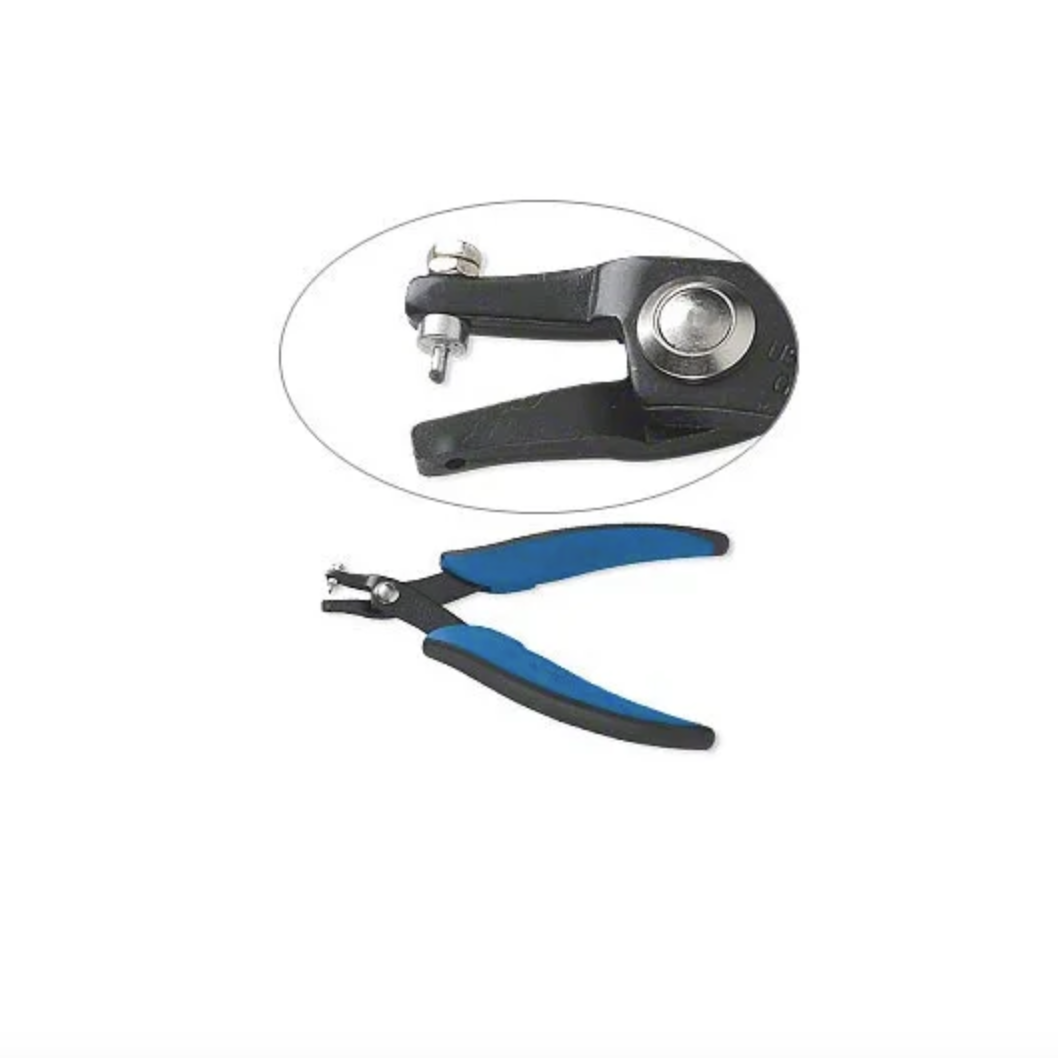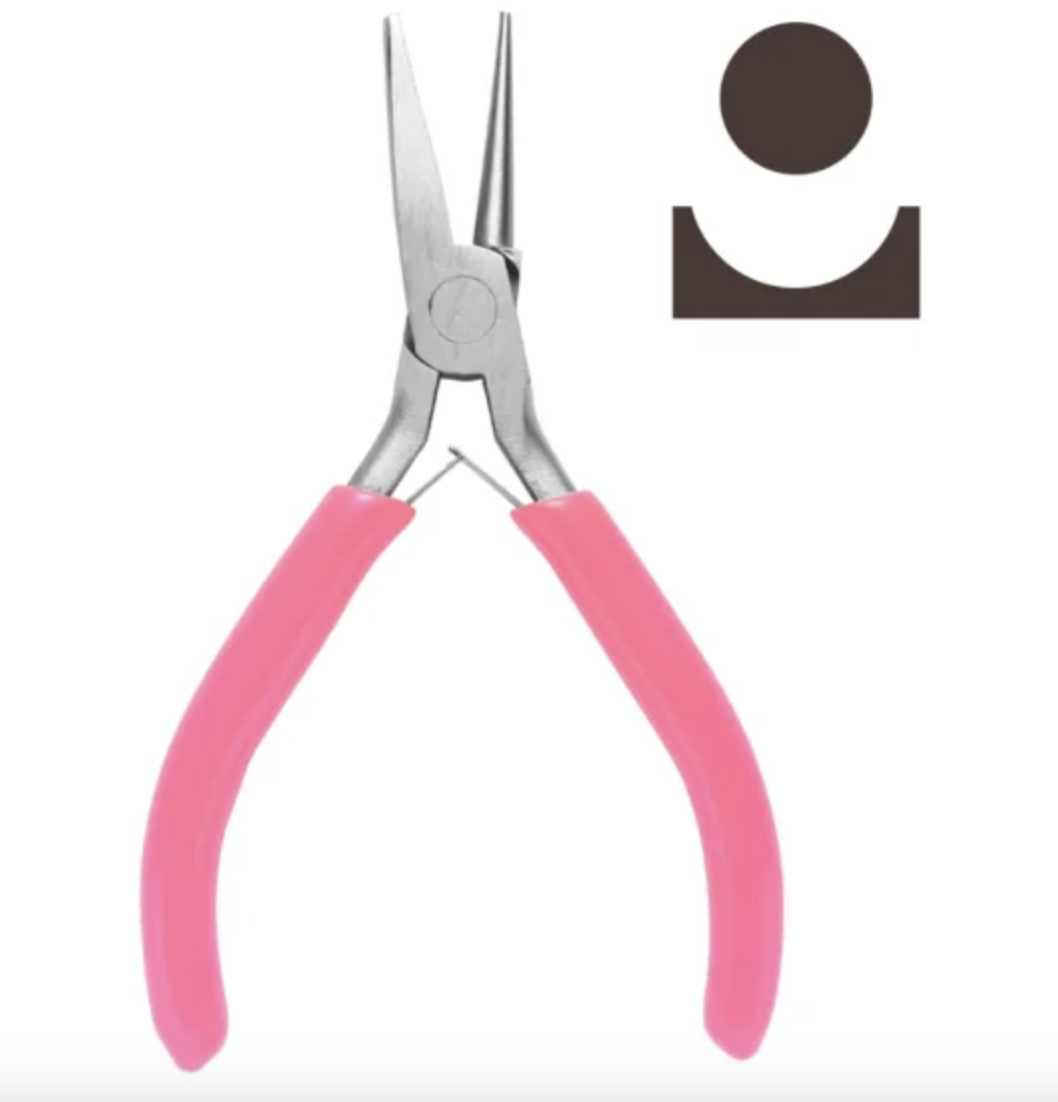How to use the different jewellery pliers
In this blog post, we take a closer look at some of the most popular types of pliers used in jewellery making. At Smyks.dk, we offer a wide range of free blog posts and jewellery design guides where we often refer to these essential tools. It is therefore important to understand the functions, benefits and limitations of pliers so you can choose the right pliers for your DIY jewellery project. Whether you're working with jewellery wire, beading wire, beading rods, beading wire or other materials, the right tool is essential for creating beautiful and professional-looking jewellery. Read on below to learn more about the best pliers for jewellery making and how they can optimise your creative work, whether you're making necklaces, bracelets, earrings or something else entirely.
It should be stressed that jewellery-making pliers are a lighter and finer type of pliers than those normally found in DIY stores, as fine and often delicate details are involved in jewellery making. For the same reason, jewellery pliers should not be used for working and cutting coarser sheet metal or steel wire (steel wire) as this will simply damage the pliers. As a general rule, these pliers are only suitable for silver, copper or brass materials and, if necessary, only finer steel parts.
Cutting plier

This type of pliers is used to bite or cut jewellery materials and metal wire. Suitable for: silver wire (up to 1 mm in diameter), pearl rods/headpins and other jewellery components. When working with thicker silver wire or steel wire, it is recommended to place the wire further into the jaws of the pliers to avoid damaging the tip of the pliers. Note that jewellery wire, tiger-tail wire, nylon or sewing thread should be cut with old scissors as jewellery wire cutters are not designed to cut steel or fabric. A jewellery wire cutter like this is also known as a diagonal cutter due to the bevelled cutting method that allows you to ‘nip’ metal wire in hard-to-reach corners. However, the pliers leave a bevelled edge on the cut wire, which can sting if not filed or bent. If you want a perfectly straight cut, you should buy straight wire cutters instead, but they usually can't get as close to the jewellery piece as the wire cutters can.
Use bite pliers to ensure professional results in your jewellery design and craftsmanship. Perfect for DIY jewellery, bracelets and necklaces.
Needle nose pliers (+ needle nose pliers with bent jaws)

The pointy nose plier or chain nose plier is one of the most widely used and essential pliers for jewellery making. Often used in sets of two, they act as your ‘extra hands’ when making and designing jewellery. With the needle nose pliers you can easily grab small parts, like tweezers, as well as hold your jewellery parts in your jewellery projects, open and close eyelets, and clamp beads/wire clips securely in place. While many prefer to use the flat nose pliers for these tasks, the pointed pliers have the great advantage that their pointed end makes it possible to work precisely and get up close in the most detailed jewellery work. This makes the pliers indispensable for both beginners and professionals in jewellery making.
Wide-nosed flat-nosed pliers

Many people often use the wide-nosed flat nose pliers in the same way as the pointed pliers as they can perform many similar tasks. However, the flat nose pliers have another special advantage: they are perfect for smoothing and straightening bent jewellery wire to make it look professional and flawless, as well as holding the slightly larger jewellery parts. On the other hand, it can't get very close to small corners and details due to its width.
Round nose pliers

The round nose pliers are an indispensable jewellery-making tool when you need to make loops on your beads or threads for your jewellery. With its round and conical jaws, you can easily form round loops of different sizes depending on where on the jaws you place the wire. This makes the round nose pliers ideal for creating precise and uniform eyelets on pearl pendants or for forming curves, bends and hooks on silver wire. Round nose pliers are available with different tips from as small as 1 mm and up. Therefore, if you want to make very small eyelets with a very small inner diameter of 1 mm, choose a pointed model.
Flat nose pliers with nylon jaws

These specialised pliers have the same function as ordinary flat-nose pliers, but are gentler on the material you're working with as the jaws are coated with nylon splints to avoid marks and small scratches in the silver caused by squeezing it. The pliers may seem a bit rough, but they are a good choice if you need to hold something without damaging it.
Rail pliers
The rail pliers are a specialised jewellery making tool used to create soft and smooth curves. It's perfect for tasks like shaping a finger ring or other round jewellery. Many might think: ‘Can't you just use a round nose pliers for that?’ While the round nose pliers can be used for most tasks within this topic, the rail pliers are far more effective as they create a natural and smooth curve that is difficult to achieve with round nose pliers.
Multi-level round nose pliers

These pliers are used for the same purpose as regular round nose pliers, but with an important advantage: they are ideal for projects where it is crucial that all eyelets have exactly the same diameter. This makes it particularly useful for jewellery making, where uniform eyelets create a professional and harmonious look. Our model has three steps, making it easy to make eyelets in different but standardised sizes as needed. This tool is perfect for both beginners and experienced jewellery designers who want precision in their work.
Looper
The looper is a specialised tool designed to make and bend eyelets ‘for you’. It simply shapes the loops itself. It is used for head pins and metal wire. It creates loops with an inner diameter of 1.5 mm and is best suited for wire thicknesses between 0.5 and 1 mm. With the looper, you can easily create uniform loops with just one simple movement, saving time. The loops are ideal for connecting jewellery pieces, adding pendants and creating elegant details in your jewellery designs. This tool is for those who need to create projects with a lot of loops and don't like making loops manually.
Heavy-duty wire cutter / parrot eye pliers / wire cutter

The wire cutter is a powerful and reliable tool designed for cutting both thick chains, metal wire, including beading wire in steel and similar materials. These pliers easily and cleanly cut at a 90-degree angle, minimising sharp edges. With a length of 13 cm, they are compact and easy to handle, and are suitable for silver wire thicknesses up to approximately 2.5 mm. This makes it perfect for projects with heavier materials such as chains and wire. Although the pliers are relatively powerful, they are still only intended for lighter items such as jewellery materials in silver, copper and brass and are not suitable for cutting steel and iron over long periods of time. The pliers cannot cut fabric, nylon wire, leather, elastic and the like.
Magical crimper, special wire crimper, for 2 mm wire crimps, 1 pc

Magical Crimper is a specialised plier designed to transform 2 mm tubular wire clamps into elegant round beads. These pliers provide a quick and fine assembly at the clasp ends of your necklace, eliminating sharp edges and ensuring a professional finish for your jewellery. Perfect for creating a polished and quality look in your designs. The pliers are specifically designed for use with the slightly heavy 2 mm tubular wire clamps and make it easy to work with even the smallest details. It is therefore important that you have the right type of wire clamps for the pliers, otherwise the result will not be usable. Related wire clamps can be purchased here
Ordinary wire clamp pliers / crimp bead pliers

A crimp bead plier provides the best closure for your crimp beads and ensures that your necklace doesn't open by itself at the clasp, With these special pliers, you first clamp the crimp bead in a V-shape (with bite E) and then rotate it 90 degrees and fold it completely with the pliers' second bite (F). This gives a very strong hold on the bead wire rather than if the wire crimp was just clamped flat on the wire with a chain nose pliers or similar. At this link you will find a guide to using a wire clamp pliers
Handheld Punch Pliers - Carbon Steel

These handheld carbon steel pliers with soft plastic handles are ideal for making 1.25 mm round holes in various lighter materials. It is designed to work with copper, brass, silver and other soft metals up to 0.8 mm thick. The pliers have an overall length of 15.5 cm, a jaw length of 12 mm and a tip width of 3.5 mm, making it both compact and efficient.
Additional pins can be purchased for extended use. In addition to metals, the pliers can also be used to make precise holes in cardboard, leather, rubber and similar materials. This versatile punch is an indispensable tool for both jewellery making and creative projects when it comes to making precise holes. It is recommended that you mark the hole with a pen before making the hole to ensure precise execution.
Special wire bending pliers with perforation

Designed for jewellery making, these special wire bending pliers combine the features of both round nose and flat nose pliers with a hole punch. Made from sturdy carbon steel, the pliers provide a firm grip on wire and string, making them ideal for shaping metal wire, making eyelets and other details in jewellery design.
The pliers measure 12 x 7 cm and are equipped with an ergonomic pink plastic handle for comfort during use. This tool is perfect for both beginners and experienced jewellery makers who want versatility and precision in their work.

We will publicly show your name and comment on this website. Your email is to ensure that the author of this post can get back to you. We promise to keep your data safe and secure.